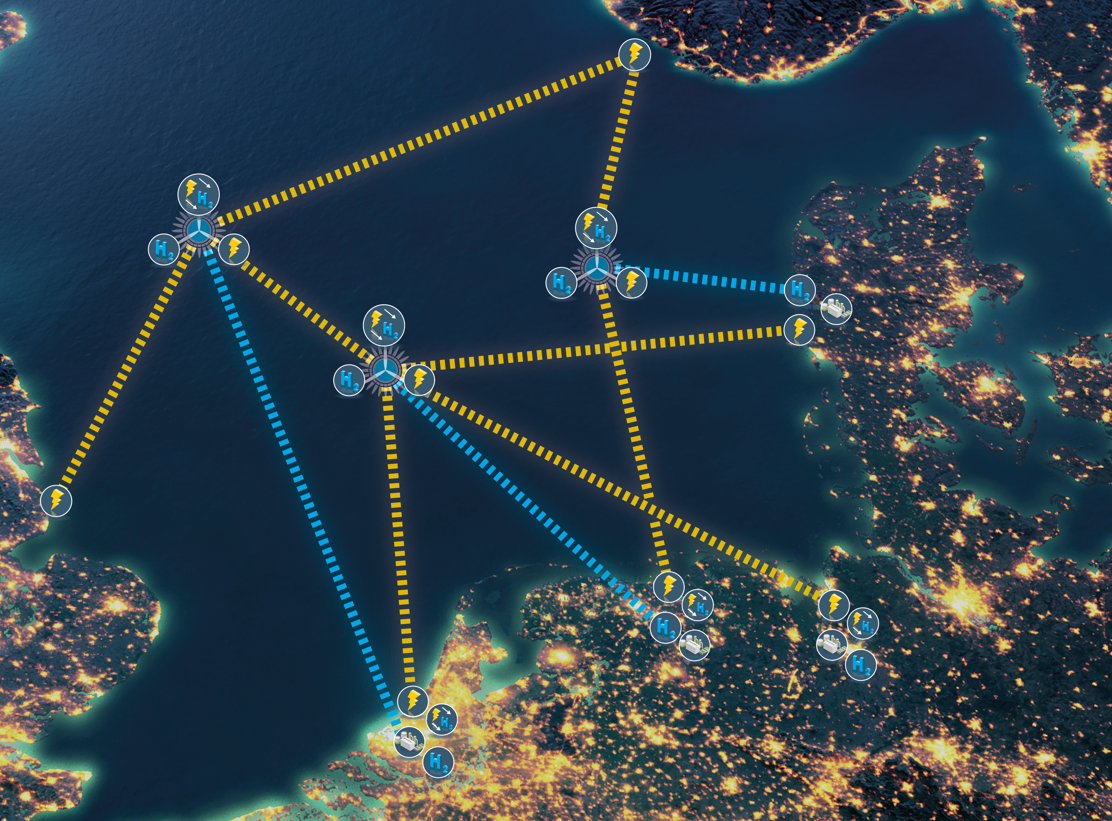
North Sea Wind Power Hub
Both international cooperation and innovation are necessary to achieve the climate and energy objectives of the Paris Climate Agreement efficiently and cost-effectively.
In 2016 TenneT presented its vision for the North Sea Wind Power Hub, and took the initiative to set up a consortium. The consortium, which is jointly investigating the possibilities for this so-called North Sea Wind Power Hub, now has five partners: TenneT Nederland, TenneT Germany, the Danish grid operator Energinet, Gasunie and the Port of Rotterdam.
The consortium wants to facilitate the large-scale roll-out and integration of wind energy in the North Sea, far away from the coast. It is attempting to achieve this at the lowest possible cost to society, as part of the transition to sustainable energy sources.
Internationally coordinated
According to TenneT’s long-term vision (up to 2050), for a cost-effective further roll-out of offshore wind energy, which is expected to take place on a large scale further away from the coast, it is essential to switch to an internationally coordinated roll-out of the offshore grid with wind power hubs, rather than individual national connections.
Hub-and-spoke concept
The vision of the North Sea Wind Power Hub consortium is based on an internationally coordinated roll-out of so-called ‘Hub-and-Spoke’ projects, where wind farms are connected to centrally located offshore hubs. The hubs are connected to the North Sea countries via cables or pipelines. For example, electricity markets and sectors (such as mobility and industry) will be interconnected, and wind energy will be integrated into the energy system smartly and cost-efficiently. The possible application of power-to-x, the conversion of electricity to another energy carrier, such as hydrogen, will also be considered.<br />Feasibility studies have shown that the Hub-and-Spoke concept proposed by the consortium is feasible both technically and economically. A wind energy hub of 10 to 15 gigawatts can be the first step in the development of one or more hubs to be connected to neighbouring countries. Given the enormous challenge of complying with the Paris Climate Agreement, the first hub is expected to be developed in the early 2030s.
Three design scenarios
The consortium investigated three possible design scenarios for the hubs, based on foundation types: artificial islands, caisson islands and platforms. The optimum foundation type depends on the location and size of the offshore wind cluster to be connected.
